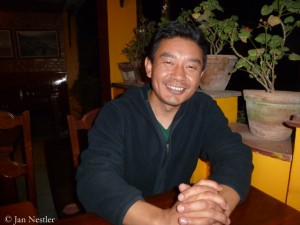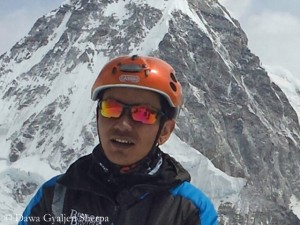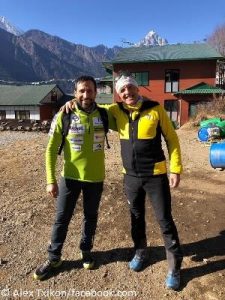Securing Everest jobs of the future
He is one of the Sherpas who stay well clear of Mount Everest this year. “I simply haven’t got the time,” says Dawa Sherpa Gyaljen, when I meet him in a cafe in Kathmandu during my visit Nepal. The 29-year-old is working for a trekking operator. “Maybe I’ll get the chance in 2017 again. I have been asked if I would lead an Everest team next year. Let’s see whether I can take as much vacation.” The Sherpa, who was born in the Khumbu region in a small village west of Namche Bazaar, has reached the highest point on earth already four times: in 2005, 2007, 2008 and 2009. The upcoming spring season could set the course for the future, Dawa believes.
Used to aftershocks
“If also this year accidents happen like in 2014 or last year, maybe people get scared,” Dawa expects. “But if the expeditions are successful, the number of climbers for sure will go up in 2017 and 2018.” Dawa says, that he is happy, that many foreigners are willing to travel to Nepal again to boost the economy of the country that was hit so hard by the earthquake. In his own words, Dawa is now hardly thinking about the earthquake on 25 April 2015, not least because of the more than 400 aftershocks measuring 4.0 or more: “Sometimes I don`t even feel earthquakes of 4.5 or 5 because I got used to. It’s a bit normal for me now. We survived a very dangerous situation, now I feel safe. But there are still rumors that a bigger quake will come again.”
Impossible to forget
Sherpas are determined to make this year’s Everest season a successful one. “Finally, it is also about protecting their jobs in the future,” says Dawa Gyaljen. “It’ not actually pressure, but a kind of challenge. I think they will push hard to get to the summit this year.” In spring 2014, the young Sherpa was among the first who reached the accident site in the Khumbu Icefall after the avalanche and who started the recovery of the injured and dead. 16 Nepali climbers were killed, three of them remained missing. I ask Dawa if he could climb through the icefall easily after that experience. “I think you cannot escape this. When we pass this place, we even feel like that there is some blood or somebody is still in the crevasse.”
Better trained
Dawa Gyaljen finds that Everest aspirants of today on average are better climbers than those in past years. “There are only a few who still don’t know how to put on their crampons,” says the 29-year-old, adding that also the Sherpas are now much better trained because they went through the practical trainings offered by the Nepal Mountaineering Association (NMA) twice a year. The Sherpas are always responsible for their clients, says Dawa: “If some bad thing happens, the Sherpas are blamed for it because they didn’t take care of their clients. There are rumors about unskilled Sherpas who abandoned their clients half way on the mountain.” However, the trained and skilled Sherpa guides never left their clients alone, says Dawa: “But if the clients insist on climbing further up against the advice of their Sherpas, then they have to bear the responsibility for their own.”










